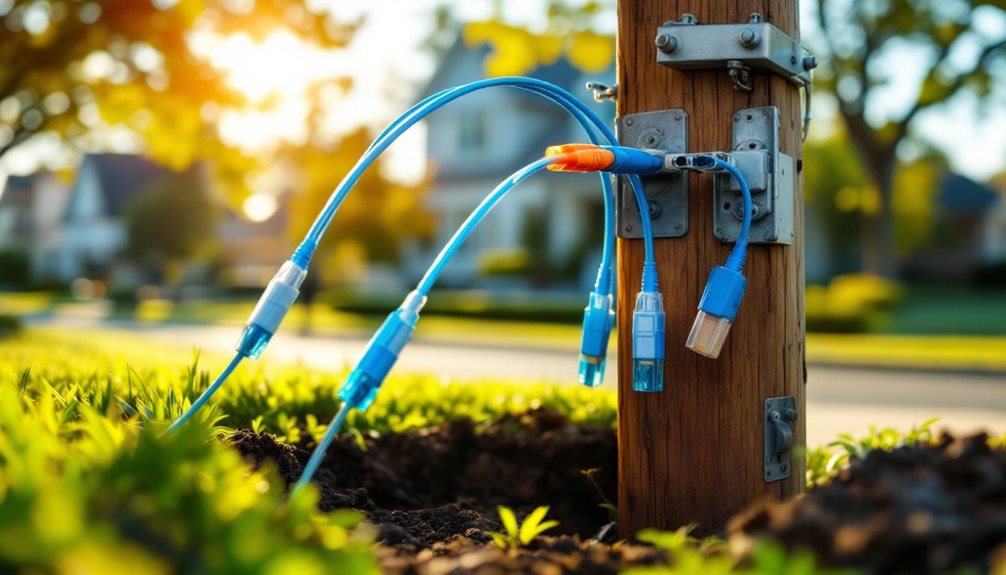South Africa’s digital divide means checking fibre availability is basically a postcode lottery. Major providers like Openserve and Vumatel offer coverage checkers, but prepare for disappointment. Your neighbour might have blazing-fast FTTH whilst you’re stuck with Stone Age ADSL. Urban areas and wealthy suburbs get priority treatment, obviously. Infrastructure challenges, load shedding, and cable theft keep delaying expansions. Those coverage checker tools will reveal whether you’ve won the fibre jackpot or need to investigate alternatives.
How frustrating is it when neighbours brag about their blazing-fast fibre internet while you’re stuck buffering Netflix on ancient ADSL? The answer lies in checking whether fibre actually reaches your address. And spoiler alert: it probably doesn’t.
Your neighbours have fibre. You have buffering. Welcome to South Africa’s digital divide.
Finding out starts with checking coverage on platforms like MyBroadband’s coverage checker or ISP websites directly. These sites analyse real-time data to match providers with locations. Users can also punch in their exact address or search by suburb. Simple enough, right? Wrong. Results often disappoint.
The big players include Openserve and Vumatel. Each covers different areas. Vumatel focuses heavily on urban developments and estates. Openserve leverages existing infrastructure. DFA (Dark Fibre Africa) and MetroFibre target specific regions across the country.
Here’s where things get technical. And annoying. Fibre to the Home (FTTH) runs optical cables directly to homes. That’s the gold standard. Then there’s the half-baked stuff: hybrid networks that bring fibre close but rely on copper or wireless for the final connection. Guess which one most people get stuck with?
Major providers promise to connect millions of South African homes over the next few years. Ambitious? Sure. Realistic? Debatable. Suburb-by-suburb implementation requires massive infrastructure planning. Municipal permissions slow everything down. Load shedding complicates installations. Vandalism and cable theft add months to timelines. Rapid Installation Process connects users within 3-5 days with expert setup once infrastructure is available. The costly FTTH infrastructure requirements mean fibre availability varies dramatically between neighbourhoods, with wealthier areas typically getting connected first.
The performance gap between fibre and alternatives remains brutal. Fibre delivers symmetrical speeds – up to 1000 Mbps both ways with many providers. Some areas even hit 10,000 Mbps. Consistent speeds ensure reliable performance for households and small businesses requiring dependable internet access. Meanwhile, ADSL limps along with asymmetric speeds, maybe 4 to 40 Mbps downstream. LTE? Variable speeds with data caps that make unlimited streaming impossible. Even basic HD streaming requires a minimum of 6 Mbps according to industry standards.
When fibre remains a distant dream, alternatives emerge. Fixed LTE and wireless broadband serve areas without fibre coverage. Cable providers like DStv offer internet in select areas. ADSL crawls along at 40 Mbps maximum. Public Wi-Fi hotspots offer temporary relief whilst waiting for installation that may never come.
The tools exist. MyBroadband’s coverage checker, Vumatel’s coverage map, Openserve’s address lookup – they all work. They’ll tell you exactly which providers serve your area. They’ll also confirm what you probably already suspected: fibre remains frustratingly out of reach for most addresses outside major suburban developments.
